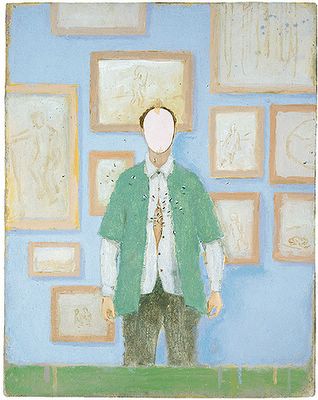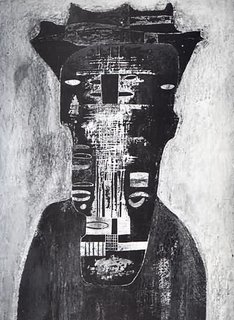
Francis Alys' paintings are enigmatic, naive, like puzzles of everyday life. And I think the paradox lies in that he uses a very simple iconography to throw us off.


 Today's continuing redrawing of the boundaries of art in graffiti art, in signage art, and in the various various forms of appropriation of the art of predecessors reflects our continuing exploration of areas of experience in a complex and rapidly changing world. In my view, recent art reflects a series of strong responses to provocative circumstances with themes of hedonism, humor, pathos, sexuality, compassion and concern, and others, which are presented to middle-class and non-middle-class audiences in a variety of traditional and nontraditional settings, from gallery to street corner to ballpark. Part of the puzzle and challenge in interpreting modern visual art is in the making of connections to what's happening in society as well as to prior art and to the intentions and concerns of the artist. --Marilyn Jahn, Art Journal, Vol. 53, 1994.
Today's continuing redrawing of the boundaries of art in graffiti art, in signage art, and in the various various forms of appropriation of the art of predecessors reflects our continuing exploration of areas of experience in a complex and rapidly changing world. In my view, recent art reflects a series of strong responses to provocative circumstances with themes of hedonism, humor, pathos, sexuality, compassion and concern, and others, which are presented to middle-class and non-middle-class audiences in a variety of traditional and nontraditional settings, from gallery to street corner to ballpark. Part of the puzzle and challenge in interpreting modern visual art is in the making of connections to what's happening in society as well as to prior art and to the intentions and concerns of the artist. --Marilyn Jahn, Art Journal, Vol. 53, 1994.
